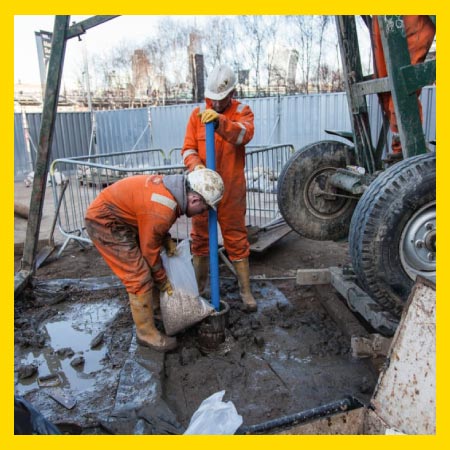Currency
January 18, 2023

Slip, trip and fall injuries are unfortunately not uncommon in many industries, including mining.
In 2021, there were 771 reported slip and fall injuries in the mining industry out of a total of 3,421 injuries, according to the National Institute of Occupational Safety and Health (NIOSH).
Many factors can contribute to slips and falls when working in a mine, like equipment, walkways and the conditions. In honor of National Miners Day, which is recognized on December 6, let’s look at ways to prevent the second leading cause of nonfatal injuries resulting in lost time in mining.

Working around or with equipment, especially mobile equipment, can lead to injuries. The most common equipment to cause slips, trips and falls at a mine are “large trucks (haul trucks), loaders and dozers,” NIOSH reported.
How can employers keep workers safe around mandatory equipment? In parking areas, store a few items that can be used to clean equipment of any “contaminants” and ensure there is a minimum of “20 lux of uniform illumination,” NIOSH said. If workers don’t have a parking area, employers should assign one.
The use of ladders and stairs is also important to avoid incidents around equipment. Here are a few tips from NIOSH:
It’s important to consider the conditions of the mine when working. During an observation, NIOSH found the most common environmental hazards were at a stone, sand and gravel mine were debris, liquid and uneven levels. To mitigate the risks the environment poses, employers should ensure that surfaces are clear from any “large rocks” or debris, including “material accumulation,” build drainage systems to move water out of the worker’s way, craft walkways and maintain “stair treads,” NIOSH said. Employers who utilize grated metal walkways should ensure the incline remains below 10 degrees if they may become slippery and consider a diamond weave pattern over other patterns, as this may keep workers safer from slips, NIOSH said.
In 2021, there were 771 reported slip and fall injuries in the mining industry out of a total of 3,421 injuries, according to the National Institute of Occupational Safety and Health (NIOSH).
Many factors can contribute to slips and falls when working in a mine, like equipment, walkways and the conditions. In honor of National Miners Day, which is recognized on December 6, let’s look at ways to prevent the second leading cause of nonfatal injuries resulting in lost time in mining.

Working around or with equipment, especially mobile equipment, can lead to injuries. The most common equipment to cause slips, trips and falls at a mine are “large trucks (haul trucks), loaders and dozers,” NIOSH reported.
How can employers keep workers safe around mandatory equipment? In parking areas, store a few items that can be used to clean equipment of any “contaminants” and ensure there is a minimum of “20 lux of uniform illumination,” NIOSH said. If workers don’t have a parking area, employers should assign one.
The use of ladders and stairs is also important to avoid incidents around equipment. Here are a few tips from NIOSH:
- “Ensure that adequate handholds are provided along the length of the ladder and into the cab.”
- “Construct ingress/egress platforms with stairs that allow operators to access the cab of the equipment without using ladders.”
- “Provide…at least 100 lux around mobile equipment to improve detection of hazardous ground or ladder conditions.”
- “Regularly and thoroughly inspect and maintain ingress/egress systems on mobile equipment.”
It’s important to consider the conditions of the mine when working. During an observation, NIOSH found the most common environmental hazards were at a stone, sand and gravel mine were debris, liquid and uneven levels. To mitigate the risks the environment poses, employers should ensure that surfaces are clear from any “large rocks” or debris, including “material accumulation,” build drainage systems to move water out of the worker’s way, craft walkways and maintain “stair treads,” NIOSH said. Employers who utilize grated metal walkways should ensure the incline remains below 10 degrees if they may become slippery and consider a diamond weave pattern over other patterns, as this may keep workers safer from slips, NIOSH said.









